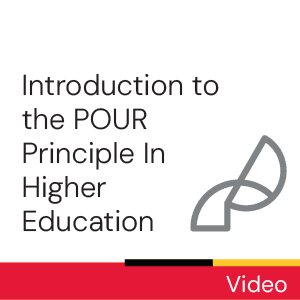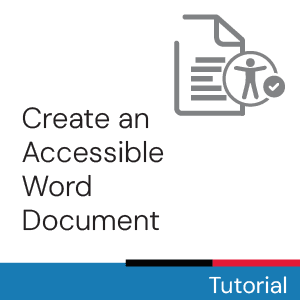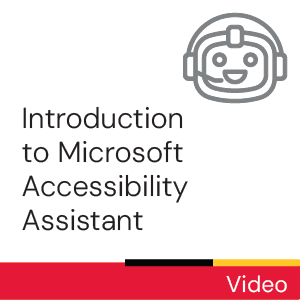Time commitment
2 - 5 minutes
Description
This video provides an overview of the importance of making educational experiences more inclusive.
Video
Transcript
As educators, we all want to create an inclusive and supportive learning environment. But what does that actually mean? Let’s talk about why accessible education matters and how it benefits not just students with disabilities, but everyone in higher education. Accessibility in education ensures that all students can fully participate in learning. It’s not just about meeting legal requirements with the Accessibility for Ontarians with Disabilities Act, or AODA. It’s about fairness, inclusion, and removing barriers to success. More students with disabilities are enrolling at Ontario universities. Between 2013 and 2021, registrations through offices for students with disabilities increased by nearly 80%. That means in any given class, you will likely have students who need accommodation. But prioritizing accessible course materials—such as well organized content, clear layouts and readable fonts—removes barriers for students with disabilities and improves the learning experience for all students. Without accessible course materials, students may struggle to complete readings, participate in discussions, or demonstrate their knowledge effectively. Our goal as educators isn’t to lower academic standards - it’s to ensure that every student has a fair opportunity to succeed. When we make education accessible, we improve the experience for everyone. Accessible design improves clarity, engagement, and flexibility in our courses . For example, captioned videos help not only students who are deaf or hard of hearing but also those studying in noisy environments. Well-organized documents with clear, descriptive headings help students with dyslexia as well as those who prefer structured learning materials. The good news is many accessibility improvements are simple to implement. Using built-in accessibility checkers, selecting videos with captions, and using plain language can make a huge difference. And the more we normalize these practices, the more inclusive our universities become. Planning for accessibility before your course even begins, by selecting and creating accessible course materials, means your course materials won’t require as many modifications to accommodate students with disabilities and will help save time during the semester. So, what can you do? Start small. Ensure your syllabus is readable, videos are captioned and have transcripts, and structure your documents using the heading styles in Microsoft Word. In addition, providing access to the course syllabus and lecture materials as early as possible can help improve the accessibility of your course. For more guidance, check out the accessibility resources on the Instructor Toolkit for Accessible Course Materials linked below. Need more help? You can email us, use the Click to Chat feature on the library website, or visit the Ask Us desk!
License

This work is licensed under a Creative Commons Attribution-NonCommercial-ShareAlike 4.0 International License.
Recommended
- Ask Chat is a collaborative service
- Ask Us Online Chat hours
- Contact Us


